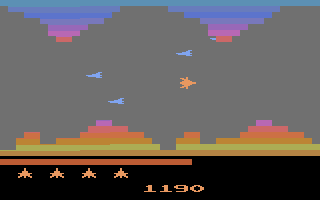Kuramu
Member
despite it's large ass pixels and crappy sound fx, there is one thing the 2600 did better than even the super NES... smooth color gradients. WTF? why was this possible on the 2600, yet NES and beyond were stuck with limited color pallets?
for example, look at Pitfall II's horizon. many of the later gamer had it
for example, look at Pitfall II's horizon. many of the later gamer had it



